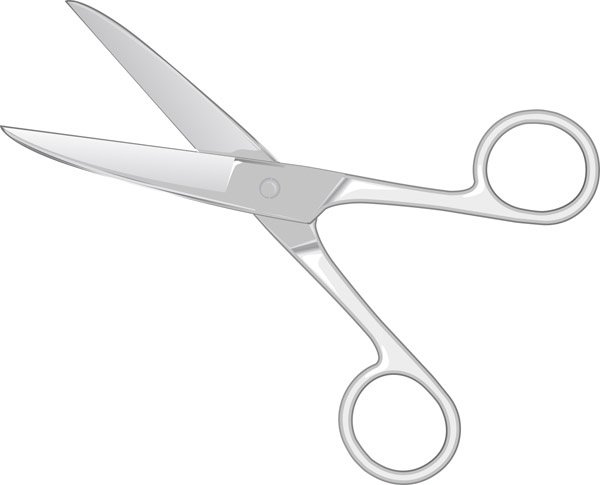You’ve spent a mammoth amount of time on your blog post: researching, writing, editing, proofreading, and you’re proud of the content you’ve created. Now you’re ready to post, sit back, and watch the visitors roll in.
The problem is, you’re not getting the results you want.
You’re ranking lower on Google than you’d like, and the number of visitors you’re receiving isn’t what you expected.
Is it the quality of your blog? The number of words? The topic of choice?
Chances are, there’s a much, much simpler explanation:
Your title tag.
You can spend hours writing your blog post, but without a fantastic title tag to boot, the hard work you’ve put in will go to waste. This is because Google looks at your title tag when it ranks its search results. If you don’t optimise your blog title for the search engine, then it won’t get very far.
But not to worry!
Here at Digital Media Stream, we’re sharing our nine fantastic techniques you can use when writing your title tag so that you can skyrocket your ranking on Google and get visitors piling on into your site.
What Is a Title Tag?
First things first, it’s best to clarify what a title tag actually is.
Title tags refer to those big blue titles that you see on Google results when you type in a search query. Your title tag can be the same or different from your blog title depending on what you choose, but generally, it’s best to keep them the same to create a consistent experience for readers.
Why Are Title Tags Important?
Title tags are important on many different levels. They’re the first thing that your visitor sees when they’re looking for something on Google, so they play a major part in whether someone will decide to click on your link or not.
It’s important then to spend some quality time creating a catchy and appealing title to attract more intrigue and clicks to your site. We’ll spend more time elaborating on how you can do just that later.
Secondly, according to MOZ, title tags have “long been considered one of the most important on-page SEO elements.”
It’s vital you include the keyword you wish to rank for in your title tag, as Google looks at these keywords when deciding what search terms to rank your blog post for. The closer to the start of your title tag your keyword is, the easier it is for Google to learn what the article is about and rank it accordingly.
However, it’s important to remember that your title tag is for your reader as opposed to your search engine. This is fine, as search engines prioritise, above all else, content that web users find valuable. So, as long as your title works for the reader, it’ll work for Google too. That being said, there are a few tricks you can use to ensure your title is user-focused and optimised for SEO.
So without further ado, here are nine key techniques you can use to optimise your title tag and help bring your blog to the very top of the Google results page.
1. Research, Research, Research

It’s essential to do your keyword research before crafting any title.
In fact, it’s best to do your keyword research before even writing your blog.
This is because picking the right keyword to use and write your post on can be the difference between trying to rank among topics with 8 million search results, and topics with under 500,000 results.
Big brands often dominate search engine results pages (SERPs). If you’re a small to medium-sized business and you pick a keyword that has more than 1 million search results, you’ll likely struggle to rank on the first page, or even the second.
And if you’ve ever performed a search on Google, you’ve probably clicked on links that appeared within the first 10 results, and hardly ever ventured onto the second page.
With so much content now available, it’s no surprise that consumers have become impatient. They want results quickly, and if you want to increase your organic traffic, you’ve got to cater to their needs.
Here at Digital Media Stream, we use one of the best tools on the market, SEMrush, to perform our keyword research for ourselves and our clients. If you want to take your keyword research seriously, there’s no better tool.
2. Numbered Posts Are King

Creating list blog posts with numbered titles is one of the most effective ways to get your blog moving up the Google rankings.
As we’ve mentioned before: consumers are impatient.
They want as much information as possible as quickly as possible. So, if they see a blog post that can give them seven clear points on a subject they’re interested in, you can bet that they’re going to click through.
Think about it, which do you prefer?
Fantastic Ideas for Blog Posts
or
11 Fantastic Ideas for Blog Posts
I’m thinking you picked the latter, just as we would. Using numbered blog posts immediately demonstrates the value of the post and will get more visitors coming to your site and spending longer on it. Google will then recognise that your dwell time is higher on your website than your competitions’ and consequently reward you by placing you higher on the search page.
3. Odd vs. Even
 Surprisingly enough, odd numbers are more appealing than even numbers.
Surprisingly enough, odd numbers are more appealing than even numbers.
There’s a lot of research out there on why this is and how it impacts click-through rates. A study published by the Content Marketing Institute looked at over 150,000 of their most successful headlines. According to them, odd numbered headlines were clicked on 20% more than even numbered headlines.
So, the next time you’re writing a title tag, be sure to include an odd number to boost that traffic and get more visitors coming to your site.
4. Put A Superlative In Your Title
Superlatives are strong adjectives that you can put at the beginning of your title for that extra oomph.
Using a superlative can get extra traffic to your site. Words such as ‘best’, ‘proven’, ‘fantastic’ and ‘amazing’ are a few examples of superlatives you could use to optimise your title tag and catch your straying consumer’s eye.
21 Amazing Ways to Optimise Your Site for Google sounds much better than 21 Ways to Optimise Your Site for Google.
However, you should be careful to only put one superlative in your title.
According to a Conductor survey, more than half (51%) of respondents preferred to click on headlines with 0-1 superlatives. This percentage goes steadily down when you pick two superlatives (15%) and even lower when you pick three (9%).
So, the next time you create a blog title, use just one superlative to attract more consumers to your title, your site, and your service.
5. Use Title Case

There are three types of headline capitalisation styles: title case, lower case and all capitals.
- Title Case refers to titles in which all the words are capitalised:
- 9 Fantastic Blog Post Ideas.
- Lower Case refers to titles in which none of the words are capitalised:
- 9 fantastic blog post ideas.
- All Capitals refers to titles in which all the words are capitalised :
- 9 FANTASTIC BLOG POST IDEAS.
The Conductor survey revealed that title case is preferred 300% more than the other headline capitalisation styles.
This is the difference between receiving 1000 visitors and 3000 visitors to your blog. So, if you want to increase your organic traffic, using title case is a quick and easy way to boost those numbers.
6. The Fewer Characters, the Better

If your title tag is too long, Google will cut it off.
This damages the user’s ability to learn what your blog is about and therefore reduces the chance of them clicking through. As a result, leads will likely move onto the next search result.
Moz completed a study which looked at over 28,000 titles on the first page of Google search results. They found that Google typically displays the first 50-60 characters of the title tag, with the average title being 57.7 characters.
It’s best, therefore, to keep your title tag under 57 characters to ensure that it isn’t cut off prematurely. Your readers will know what your content is all about and you’ll put yourself in the best position to increase your traffic and get them visiting your blog.
7. Hey, You!

People like it when you talk to them directly.
Using ‘you’ and ‘your’ can really help add that personalised touch to your title tag so that you can engage with your audience before they even click into your site.
Let’s look at it. Which is better?
17 Great Tips for Improving Organic Traffic
or
17 Great Tips for Improving Your Organic Traffic
Buffer ran a study looking at their most shared headlines and found that titles that directly addressed the reader were ranked the second most popular behind the list post title.
So the next time you write your title tag make sure you include a nice human touch by adding ‘you’ or ‘your’.
8. Powerful Words Evoke Emotion

Using powerful words can really help your title pack a punch.
You can use some of the 180 power words that the famous Karl Stepp uses for emotional selling. Using words such as ‘amazing’, ‘exciting’, ‘excellent’ and ‘helpful’ can help add a certain degree of emotional weight to your title tag and lead people to click through to your blog more often.
In fact, CoSchedule ran a study that looked at the effect of Emotional Marketing Value (EMV) when used in their headlines and how it affected the number of shares a post had.
Incredibly, it showed that posts with over 1000 shares had an EMV that was twice as high as posts that had less than 100 shares.
9. Careful Not to Be Too Pushy

Obviously, you want to make your title tag as compelling as possible, but you should be careful not to come across as too pushy.
Phrases such as ‘have to’, ‘must have’ and ‘you need’ may seem like they’d compel your visitor into action, but using them may, in fact, have the opposite effect.
Outbrain ran a study on their site that found pushy headlines actually decrease user engagement by 20%.
So you should avoid using imperatives such as ‘must’ or ‘need’ in order not to pressure your visitors too much.
Instead, trust yourself and your headline!
The Perfect Title Tag Formula
Taking all that into consideration, we’ve created a perfect title tag formula that you can follow and use for all your future blog titles.
Here it is:
Perfect Title = Odd number + Superlative + Keyword Phrase
Here are a few examples:
17 Fantastic Ways to Increase Your Blog Traffic
23 Proven Methods to Increase User Engagement
11 Expert Techniques to Help Boost Lead Generation
So, if you follow our key advice, you’ll be able to see your title tag skyrocketing up the Google rankings and watch those visitors pouring in.
If you’d like to see how Digital Media Stream could help create SEO content for your site then book a free Marketing Assessment with one of our experts today.
We’ll take a look at your business and show you where you could be improving online and how this Manchester SEO Agency can help with that.




